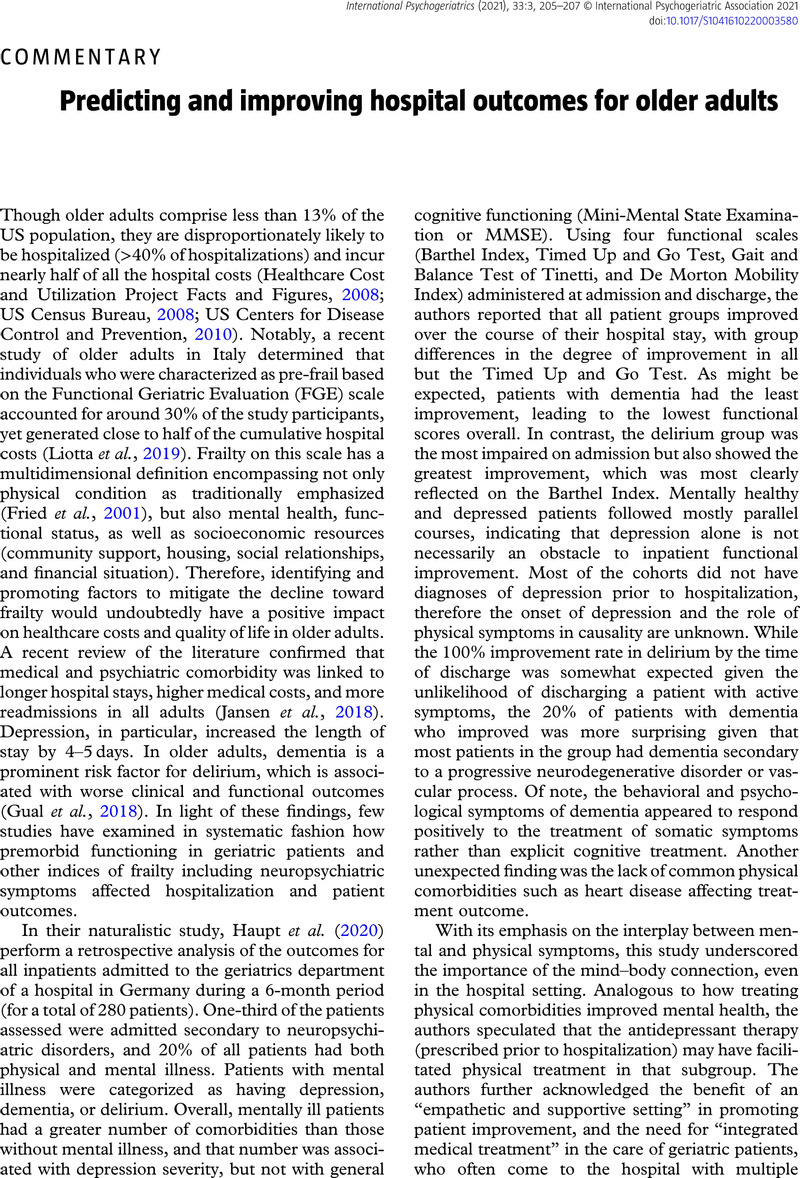Crossref Citations
This article has been cited by the following publications. This list is generated based on data provided by Crossref.
Selvaraj, Francis Jude
2024.
El transhumanismo y la mejora de la calidad de vida de las personas mayores: ¿Cómo podría configurar el futuro del dolor y el sufrimiento en las personas mayores?.
Medicina y Ética,
Vol. 35,
Issue. 1,
p.
61.
Zisberg, Anna
Gur-Yaish, Nurit
Shadmi, Efrat
Shulyaev, Ksenya
Smichenko, Juliana
Rogozinski, Amos
and
Palgi, Yuval
2024.
The Role of Subjective Age in Predicting Post-Hospitalization Outcomes of Older Adults.
Gerontology,
p.
1.





